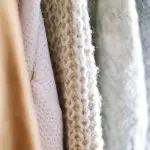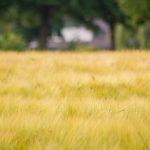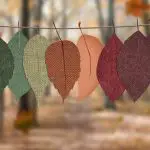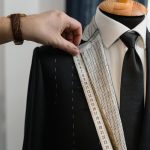When you first start sewing, it can feel like you've entered a foreign land with its own language. From understanding stitch types to mastering fabric terminology, the world of sewing is filled with unique terms that can be overwhelming.
To truly excel in this craft, you need to familiarize yourself with the essential sewing terms. This will not only help you follow patterns and instructions with confidence, but also allow you to effectively communicate with other sewing enthusiasts.
In this guide, we will explore the key sewing terms you need to know to elevate your skills and understanding of this timeless art form.
Key Takeaways
- Sewing techniques and terminology are essential knowledge for any sewing project, including stitch types, fabric terminology, seam finishes, and notions and tools.
- Understanding the impact of fabric texture and weight on sewing projects is crucial, as lighter fabrics require delicate techniques and heavier fabrics may require more robust tools.
- Must-have sewing notions include a reliable sewing machine, essential tools such as fabric scissors and measuring tape, and an organized sewing space with storage solutions.
- Pattern terminology and garment construction knowledge is important for pattern grading, fitting adjustments, fabric grain alignment, pattern drafting, fitting techniques, seam finishes, and setting sleeves.
Stitch Types
Understanding different stitch types is essential for achieving professional-looking sewing projects. Hand-sewn stitches, such as the backstitch and running stitch, are fundamental for creating strong seams and delicate embroidery. When precision and decorative flair are required, mastering decorative stitches like the French knot or blanket stitch is crucial.
Moreover, topstitching, which is visible on the right side of the fabric, adds a polished look to hems, collars, and pockets. It's important to select the appropriate topstitching thread and needle for this technique.
Basting stitches, temporary long stitches used to hold fabric pieces together before permanent sewing, are indispensable for ensuring accurate fitting and alignment before final stitching.
Whether it's hand-sewn stitches for heirloom sewing or decorative stitches for embellishing garments, mastering these techniques will elevate the quality of your sewing projects. Topstitching and basting stitches, when executed with precision, contribute to the professional finish of your creations.
Fabric Terminology
When sewing, it's important to familiarize yourself with various fabric terminology to make informed choices about the materials you use. Understanding fabric composition is crucial as it directly affects the properties of the textile. The composition refers to the fibers used in the fabric, such as cotton, polyester, silk, or wool. Each type of fiber has its own characteristics, impacting factors like durability, breathability, and care requirements.
Color theory is another essential aspect to consider when working with fabrics. It involves understanding how colors interact and complement each other, allowing you to make informed decisions about fabric selection based on the intended aesthetic appeal.
Moreover, textile properties are key to comprehend. These include characteristics like drape, weight, texture, and stretch, all of which impact how a fabric behaves when sewn into a garment. Understanding these properties will help you choose the most suitable fabric for your project.
Lastly, fabric manipulation refers to techniques that alter the appearance or texture of the fabric, such as pleating, smocking, or quilting. Knowing these terms will expand your sewing vocabulary and enable you to communicate more effectively about fabric choices and techniques.
Seam Finishes
When finishing seams, it's important to consider the type of fabric you're working with and the desired look of the finished garment.
Some common seam finishes include using a zigzag stitch for edges, utilizing an overlock or serger, and creating bias bound seams for a clean and professional look.
These different techniques offer various ways to prevent fraying, add durability, and create a polished appearance to your sewing projects.
Zigzag Stitch for Edges
To achieve clean and secure edges on your sewing projects, utilize a zigzag stitch for seam finishes. The zigzag stitch is a versatile option that serves both decorative and functional purposes.
It can be used for decorative finishing, adding a touch of flair to your seams, or for edge reinforcement, ensuring the longevity of your creations. When used for seam reinforcement, the zigzag stitch helps prevent fraying and strengthens the seam, making it ideal for fabrics prone to unraveling.
Additionally, the zigzag stitch allows for some stretch, making it suitable for knit fabrics. Adjust the stitch width and length to suit the thickness of your fabric and the desired decorative or reinforcement effect.
Mastering the zigzag stitch for edges will elevate the quality and durability of your sewing projects.
Overlock or Serger
Utilizing an overlock or serger for seam finishes ensures clean, professional edges that prevent fraying and add a polished look to your sewing projects.
When using these machines, understanding thread tension is crucial. Proper thread tension ensures that the threads lock the fabric's edge securely. If the tension is too loose, the threads won't secure the edge, leading to fraying. Conversely, if it's too tight, the fabric may pucker.
Additionally, mastering the differential feed is essential. This feature allows the machine to feed different layers of fabric at slightly different rates, preventing stretching or puckering. By adjusting the feed, you can achieve smooth, even seams on various types of fabric.
Mastering these aspects will elevate your sewing projects, providing a clean and professional finish.
Bias Bound Seams
Mastering bias bound seams as a seam finishing technique enhances your sewing skills and ensures professional-looking edges on your projects. Bias tape is a narrow strip of fabric cut on the bias, which makes it flexible and ideal for finishing curved edges. Understanding how to use bias tape effectively can elevate the overall quality of your sewing projects.
Seam allowance is crucial when working with bias bound seams, as it determines the width of the finished seam. Properly managing the seam allowance ensures that the bias tape fully encases the raw edge of the fabric.
When sewing bias bound seams, it's essential to accurately measure and cut the bias tape to achieve a clean and polished finish.
Notions and Tools
You need to be familiar with essential sewing tools. Understanding fabric weights is also important. Additionally, you must have sewing notions to ensure successful sewing projects.
Having the right notions and tools at your disposal will make the sewing process more efficient and enjoyable. Understanding the importance of these items will help you achieve professional-looking results in your projects.
Essential Sewing Tools
Start by gathering the essential sewing tools and notions you'll need for your projects.
- Quality Needles: Invest in a variety of needle types to suit different fabrics and projects, and consider the appropriate thread weights for each.
- Sharp Cutting Tools: Ensure you have sharp scissors, rotary cutters, and cutting mats for precise cutting techniques.
- Pressing Tools: A good iron, ironing board, and pressing cloth are essential for achieving professional-looking seams and finished projects.
- Measuring Instruments: Stock up on measuring tapes, rulers, and pattern weights to ensure accurate measurements and cutting.
Having these essential sewing tools at hand won't only make your sewing projects easier but will also ensure a high-quality finish.
Understanding Fabric Weights
Understanding fabric weights is essential for choosing the right tools and notions to achieve the desired results in your sewing projects. Fabric weight refers to the heaviness of the fabric and plays a crucial role in determining the fabric's suitability for different sewing techniques and patterns.
Different fabric textures and weights can impact the outcome of your project. Lighter fabrics such as chiffon or organza require delicate sewing techniques to prevent damage, while heavier fabrics like denim may need more robust tools to sew effectively.
Moreover, fabric weight affects the drape of the fabric, which is important when selecting sewing patterns. By understanding fabric weights, you can make informed decisions about the tools, notions, and sewing techniques needed to bring your sewing projects to life.
Must-Have Sewing Notions
Continuing from our discussion on understanding fabric weights, you'll need to have a clear understanding of the must-have sewing notions and tools to ensure the success of your sewing projects.
- Quality Sewing Machine: Invest in a reliable sewing machine that meets your project needs.
- Maintenance Tips: Regularly clean and oil your sewing machine to keep it running smoothly.
- Essential Tools: Stock up on essential tools such as fabric scissors, measuring tape, seam ripper, and pins.
- Sewing Room Organization Ideas: Create an organized sewing space with storage solutions for fabric, threads, and other supplies.
Keeping your sewing machine in good working condition through regular maintenance and having a well-organized sewing room with all the essential tools will set you up for successful and enjoyable sewing projects.
Pattern Terminology
Begin by familiarizing yourself with the various terms used to describe patterns in sewing.
Pattern grading is the process of increasing or decreasing the size of a pattern to fit different body types.
Fitting adjustments involve altering a pattern to ensure a proper and comfortable fit, such as adding or removing ease, adjusting dart placement, or making swayback alterations.
Understanding fabric grain is essential for laying out pattern pieces correctly. The lengthwise grain runs parallel to the selvage edges, which are the finished edges of the fabric, while the crosswise grain runs perpendicular to the selvage. It's crucial to align pattern pieces with the grain to ensure the proper drape and stability of the garment. Additionally, selvage edges are often used as a reference point for cutting and marking fabric.
Mastery of these pattern terminology terms will enhance your sewing skills and enable you to create well-fitted, professionally finished garments.
Garment Construction
To construct a garment, you'll need to sew the pattern pieces together according to the instructions provided in the sewing pattern. When it comes to garment construction, there are several key elements to consider:
- Pattern Drafting: This involves creating a pattern from scratch, either by draping fabric on a dress form or using pattern drafting techniques to create a custom pattern for a specific garment. Understanding pattern drafting is essential for creating well-fitted and tailored garments.
- Fitting Techniques: Achieving a proper fit is crucial in garment construction. Learning about fitting techniques such as making muslins (test garments) and performing pattern adjustments ensures that the final garment fits the body accurately and comfortably.
- Seam Finishes: Knowing how to finish seams professionally not only enhances the overall look of the garment but also ensures durability. Techniques such as serging, French seams, and Hong Kong finishes can elevate the quality of the garment.
- Setting Sleeves: Properly setting sleeves into a garment can be challenging. Mastering techniques for setting in sleeves seamlessly is essential for achieving a polished and professional look in garment construction.
Understanding these elements of garment construction will help you create beautifully crafted and well-fitted garments.
Embellishments
As you delve into the world of sewing, understanding how to add embellishments to your garments can elevate your sewing projects to new levels of creativity and style. Embellishments such as bead embroidery, ribbon appliqué, sequin embellishment, and lace trim can add intricate and eye-catching details to your creations.
Bead embroidery involves stitching beads onto fabric to create beautiful patterns and textures, while ribbon appliqué allows you to add decorative ribbon designs to your garments. If you're looking to add some sparkle, sequin embellishments are a great option for adding shimmer and shine to your sewing projects.
Additionally, lace trim can be used to add a touch of elegance and femininity to various types of garments. Understanding how to incorporate these embellishments into your sewing projects will allow you to add personalized and unique touches to your creations, making them stand out and reflect your individual style and creativity.
Mastering the art of embellishments will give you the ability to elevate your sewing projects and showcase your attention to detail and craftsmanship.
Frequently Asked Questions
What Are Some Common Sewing Machine Troubleshooting Issues and How Can They Be Resolved?
If your sewing machine jams, check needle alignment and bobbin tension. For thread breakage, ensure correct needle size and thread quality. If issues persist, consult manual for troubleshooting or seek professional repair services.
How Can I Properly Store My Sewing Supplies to Maintain Their Quality?
To properly store your sewing supplies and maintain their quality, organize your space by grouping similar items together. Use clear containers for easy visibility and label them. Keep fabrics in a cool, dry place to prevent damage.
What Are Some Tips for Altering Sewing Patterns to Fit My Specific Measurements?
To customize patterns for a perfect fit, start by taking accurate body measurements. Make pattern adjustments based on your measurements and use fitting techniques to ensure a personalized fit. This allows you to customize patterns to your specific measurements.
How Do I Choose the Right Sewing Needle for Different Types of Fabric?
To choose the right sewing needle for different fabrics, consider needle sizes for fabric compatibility. Use different needle types for stitch quality. Match the needle size to the fabric weight for best results.
Can You Provide Recommendations for Beginner-Friendly Sewing Projects to Practice Different Techniques?
For fabric choices, try cotton or linen for beginner-friendly sewing projects. Practice sewing techniques with simple items like tote bags or throw pillow covers. These projects allow you to hone your skills while creating practical items.
- What Is Gore-Tex Active? A Guide to the Lightweight Fabric - July 1, 2025
- What Is Gore-Tex Active? A Guide to the Lightweight Fabric - July 1, 2025
- What Is Gore-Tex Active? A Guide to the Lightweight Fabric - July 1, 2025






